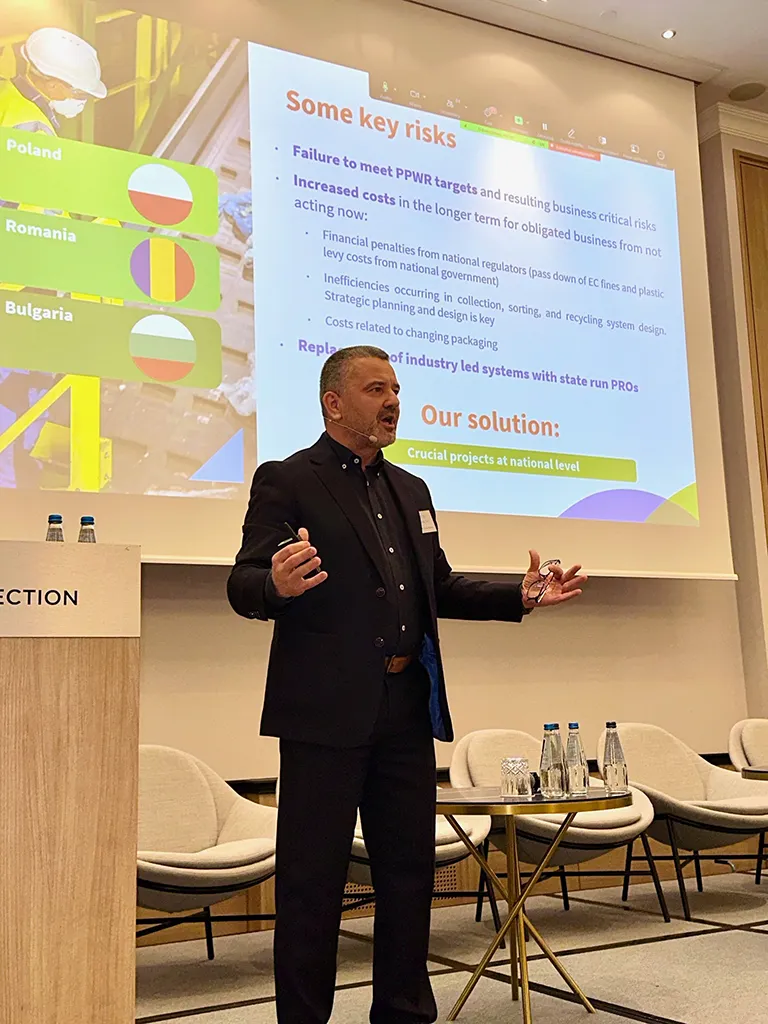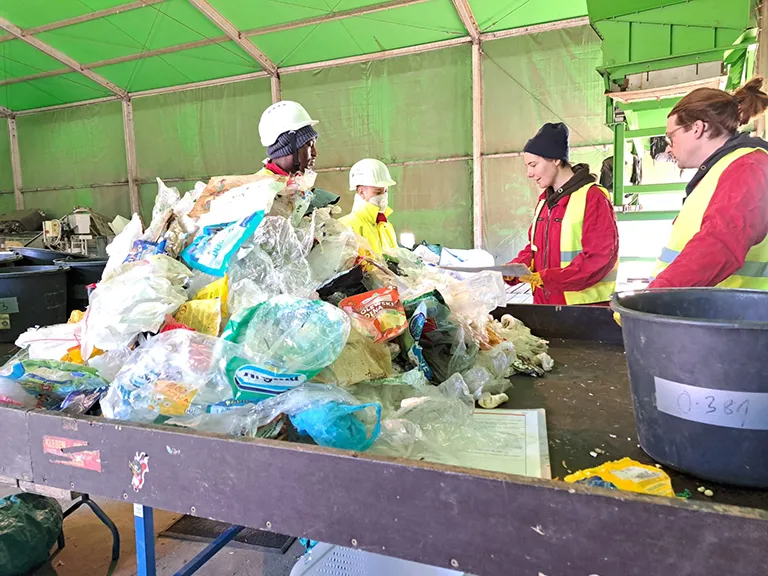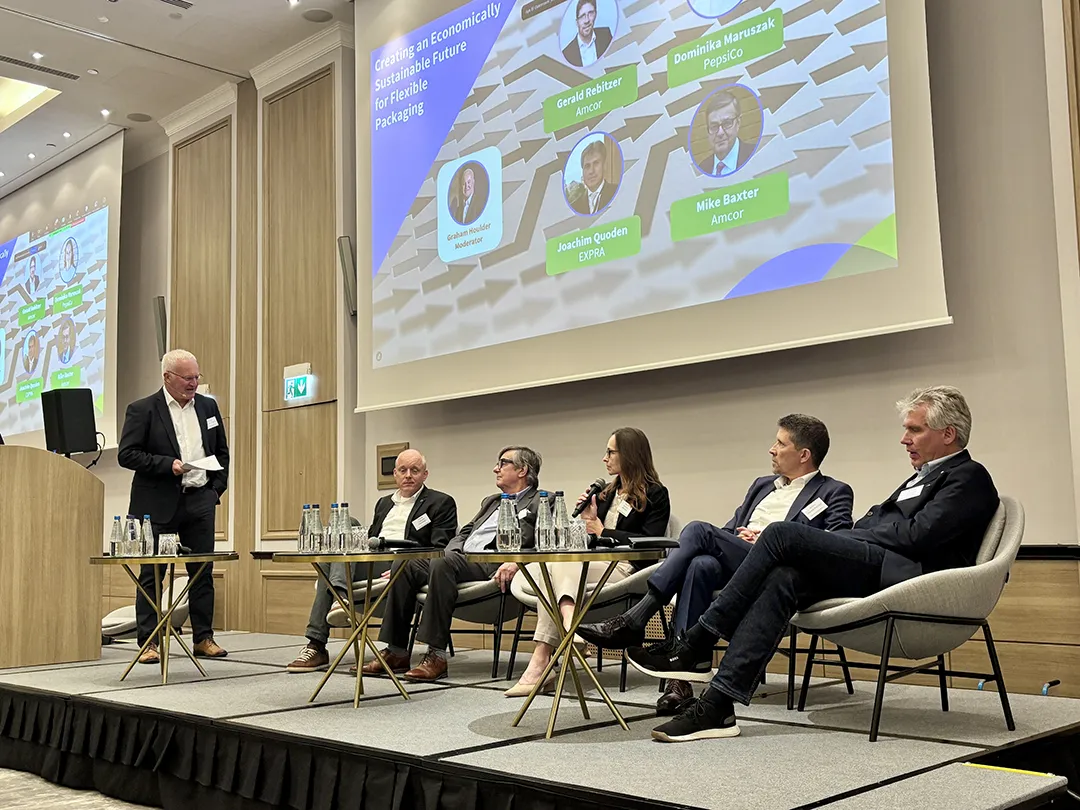In early June, CEFLEX stakeholders and partners met in Warsaw, Poland to mark a pivotal moment in the drive to deliver a circular economy for flexible packaging – and new maturity in our shift to implementation at national and regional level.
More than just another meeting, this was a chance to increase collective intelligence, challenge assumptions, share data-driven insights and equip the value chain to turn legislation like the Packaging and Packaging Waste Regulation (PPWR) into action on the ground.
In addition to engaging directly with Member States to make PPWR happen, the meeting also formally launched a major update to ‘Designing for a Circular Economy’ (D4ACE) guidelines and focused on the vital economic issues for a sustainable sector.
Why Warsaw mattered
Holding the meeting in Poland made a real difference. It brought the challenges of national-level implementation into sharper focus – especially across Central and Eastern Europe, where realities around infrastructure, regulation and recycling systems challenges can be acute and, despite concerns, State-Run PROs seem to be in fashion.
 An expert panel, including Jasmina Solecka of Natureef, Jakub Tyczkowski, Rekopol, Bart Samardakiewicz from Orlen were joined by Dominika Maruszak, PepsiCo and Mike Jefferson of CEFLEX to navigate key issues in Poland. Specific challenges cited included a lack of modern, automated sorting infrastructure where manual sorting still dominates; Frequent legislative changes; Coherent and consistent data challenges and low consumer behaviour engagement all contributing to a complex landscape where economic challenges for common across Europe are also being felt.Direct engagement with these issues, supported by insights from our compositional analysis in Poland and updates from Bulgaria, Romania and ‘RoFlex’ pilot project, helped underline a central message: delivering circularity and meeting EU targets must be shaped locally, even if driven by shared European ambitions. Pursuing this further, CEFLEX is also holding stakeholder meetings in Czechia, another important country for flexible packaging.
An expert panel, including Jasmina Solecka of Natureef, Jakub Tyczkowski, Rekopol, Bart Samardakiewicz from Orlen were joined by Dominika Maruszak, PepsiCo and Mike Jefferson of CEFLEX to navigate key issues in Poland. Specific challenges cited included a lack of modern, automated sorting infrastructure where manual sorting still dominates; Frequent legislative changes; Coherent and consistent data challenges and low consumer behaviour engagement all contributing to a complex landscape where economic challenges for common across Europe are also being felt.Direct engagement with these issues, supported by insights from our compositional analysis in Poland and updates from Bulgaria, Romania and ‘RoFlex’ pilot project, helped underline a central message: delivering circularity and meeting EU targets must be shaped locally, even if driven by shared European ambitions. Pursuing this further, CEFLEX is also holding stakeholder meetings in Czechia, another important country for flexible packaging.
CEFLEX stakeholders can consult the emerging country reports on the portal and look out for focus articles on the region.
Bridging policy and practice: equipping the value chain with insights and action
Back to the conference room, one of the meeting’s strengths was its ability to connect technical depth with policy direction. Participants explored how sortability and recyclability data, infrastructure planning and packaging design choices intersect with legislative change.
It was an honest conversation, providing a realistic assessment of what can and can’t be achieved with current collection, sorting and recycling systems – as well as the complexities of achieving circular economy goals.
“Recycling rates across Europe have to jump an average of 14% in the next five years to meet 2030 plastic packaging targets. Four times more progress than we have made in the previous ten years. We need immediate national action plans, investment and enforcement to meet PPWR” stressed Marius Tent, who leads CEFLEX’s Romanian Flexible Packaging pilot (RoFlex) and implementation work in the region looking to address exactly this challenge.
Helping to develop a clear implementation strategy, detailed compositional analysis results in Poland shared by Liz Morrish showed significant potential gains but also a challenging infrastructure, collection and even consumer-behaviour path to unlocking them.
 Of approximately 600,000 tonnes of flexible packaging handled by waste management in Poland:
Of approximately 600,000 tonnes of flexible packaging handled by waste management in Poland:
- Two-thirds appeared in the residual stream, of which well over 50% was high-potential mono-material
- Of the 200,000 tonnes one-third in the recyclables stream, 70% was mono-PE or PP
These results aligned to the significant loss of ready-to-recycle flexibles in the residual waste stream in all five of the largest flexible packaging markets in Europe studied by CEFLEX and partners – even in countries like Germany where separate collection and sorting is well established.Technical advisory on design, sorting, recycling, end markets and uniform, detailed insights into flexible and rigid plastic packaging in key European markets are helping CEFLEX convene and catalyse a small – but critical – part of the actions needed in various countries. The objective: assist EPR schemes, brand owners, collectors, sorters and the value chain identify the challenge and prioritise which actions are needed.
The Economy in Circular Economy
“Recyclers need to be able to return materials to the economy – and make a profit while doing it” opened Graham Houlder leading one of the keynote debate sessions. Making economic sense of the current environment and a path to achieving ambitious targets in the medium-term is certainly testing today.
The current system is under pressure from low virgin prices, cheap imports, and rising input costs. At the same time, ambitious recycling and content targets bring new risks and obligations for brands and retailers.
Better packaging design is crucial to reducing recycling costs and improving material yield and quality. But to scale impact, wider system levers must be activated.
The CEFLEX Steering Committee tackled the economic ‘elephant in the room’ head on during the debate. Headline takeaway, unsurprisingly, is that it will need a comprehensive, collaborative approach involving government, industry, and financial mechanisms.
Among the detailed solutions raised, fully-funded EPR driving long-term strategic planning with contracts to match and eco-modulation was near the top of the list. Increased detail and timings on demand creation for recycled content was also referred to extensively: stable market conditions, consequences for non-compliance and clarity on the geography and scope of circular materials. Increased cost transparency across the value chain and targeted investment support to recycling infrastructure and secondary sorting facilities were also touched upon alongside other policy interventions.

One major deliverable also presented at the meeting could be key to a clearer business environment was CEFLEX’s draft sorting strategy recommendation for flexible packaging. Aimed at reducing feedstock variability, improving consistency, and boosting recyclate quality across multiple recycling pathways, it’s set to be released publicly later in 2025.
Momentum, collaboration and energy
Delivering on PPWR targets is non-negotiable, and the knowledge, networks, and tools are in place. While first movers face challenges, the rewards for those who act strategically and collaboratively are there to seize.
The Warsaw meeting generated visible energy and openness. Attendees engaged in direct, practical discussions, and explored new pilot opportunities with CEFLEX and partners, especially in areas facing the greatest implementation barriers.
Equipped with robust data, honest assessments, and clear direction, stakeholders saw how they fit into the bigger picture and how their efforts contribute to, and benefit from, shared progress.
The journey continues: on the ground and across Europe.We can’t wait to meet more people and organisations passionate about the circular transition in person at our next event and out on the road in our implementation discussions.
Drop us a line if we should be talking about #MissionCircular too.
